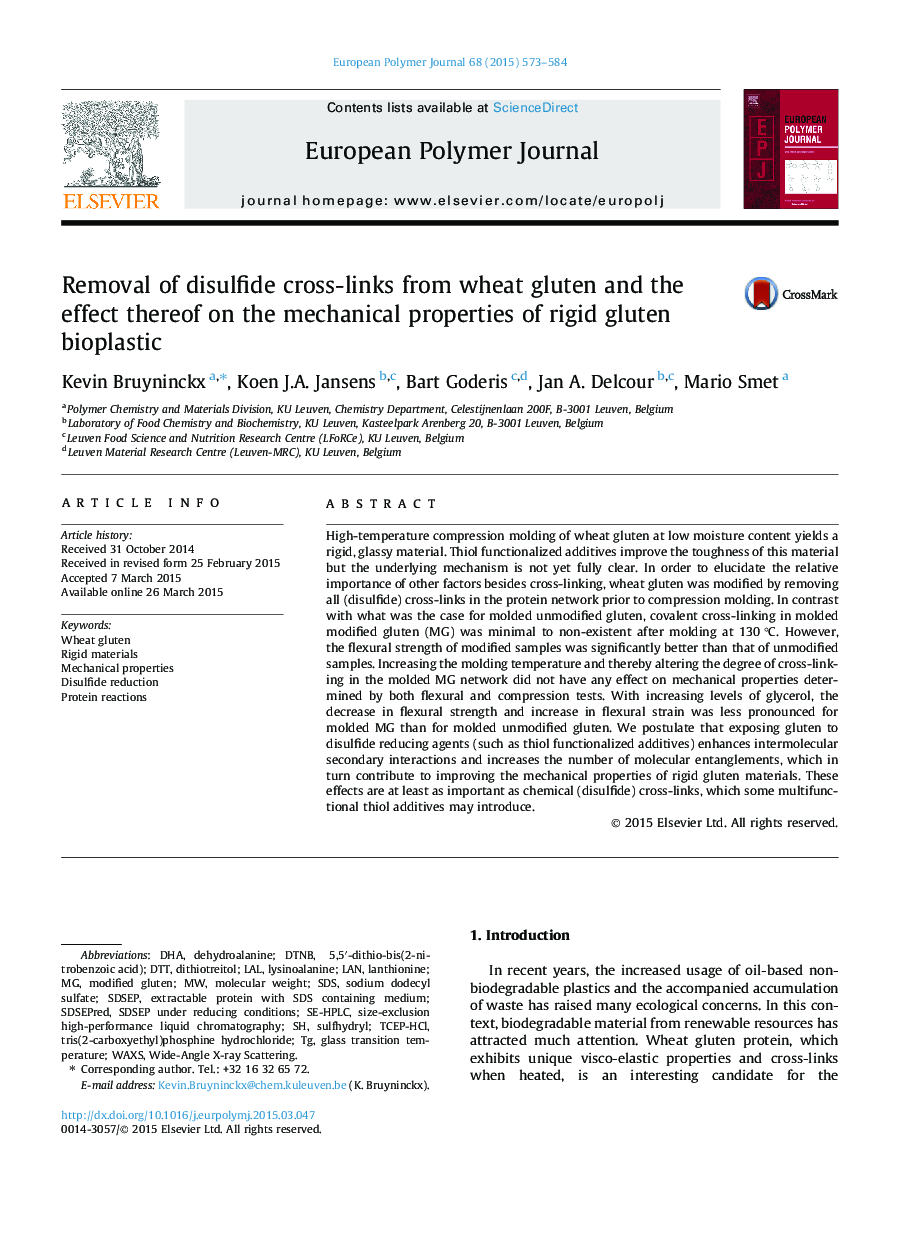| کد مقاله | کد نشریه | سال انتشار | مقاله انگلیسی | نسخه تمام متن |
|---|---|---|---|---|
| 1395105 | 1501367 | 2015 | 12 صفحه PDF | دانلود رایگان |
• Glassy gluten bioplastic was made from modified (cross-link free) wheat gluten.
• Chemical and mechanical properties of modified gluten were studied.
• Effect of plasticization on glassy gluten and glassy modified gluten was different.
• Importance of cross-linking versus conformational changes was evaluated.
High-temperature compression molding of wheat gluten at low moisture content yields a rigid, glassy material. Thiol functionalized additives improve the toughness of this material but the underlying mechanism is not yet fully clear. In order to elucidate the relative importance of other factors besides cross-linking, wheat gluten was modified by removing all (disulfide) cross-links in the protein network prior to compression molding. In contrast with what was the case for molded unmodified gluten, covalent cross-linking in molded modified gluten (MG) was minimal to non-existent after molding at 130 °C. However, the flexural strength of modified samples was significantly better than that of unmodified samples. Increasing the molding temperature and thereby altering the degree of cross-linking in the molded MG network did not have any effect on mechanical properties determined by both flexural and compression tests. With increasing levels of glycerol, the decrease in flexural strength and increase in flexural strain was less pronounced for molded MG than for molded unmodified gluten. We postulate that exposing gluten to disulfide reducing agents (such as thiol functionalized additives) enhances intermolecular secondary interactions and increases the number of molecular entanglements, which in turn contribute to improving the mechanical properties of rigid gluten materials. These effects are at least as important as chemical (disulfide) cross-links, which some multifunctional thiol additives may introduce.
Figure optionsDownload as PowerPoint slide
Journal: European Polymer Journal - Volume 68, July 2015, Pages 573–584
